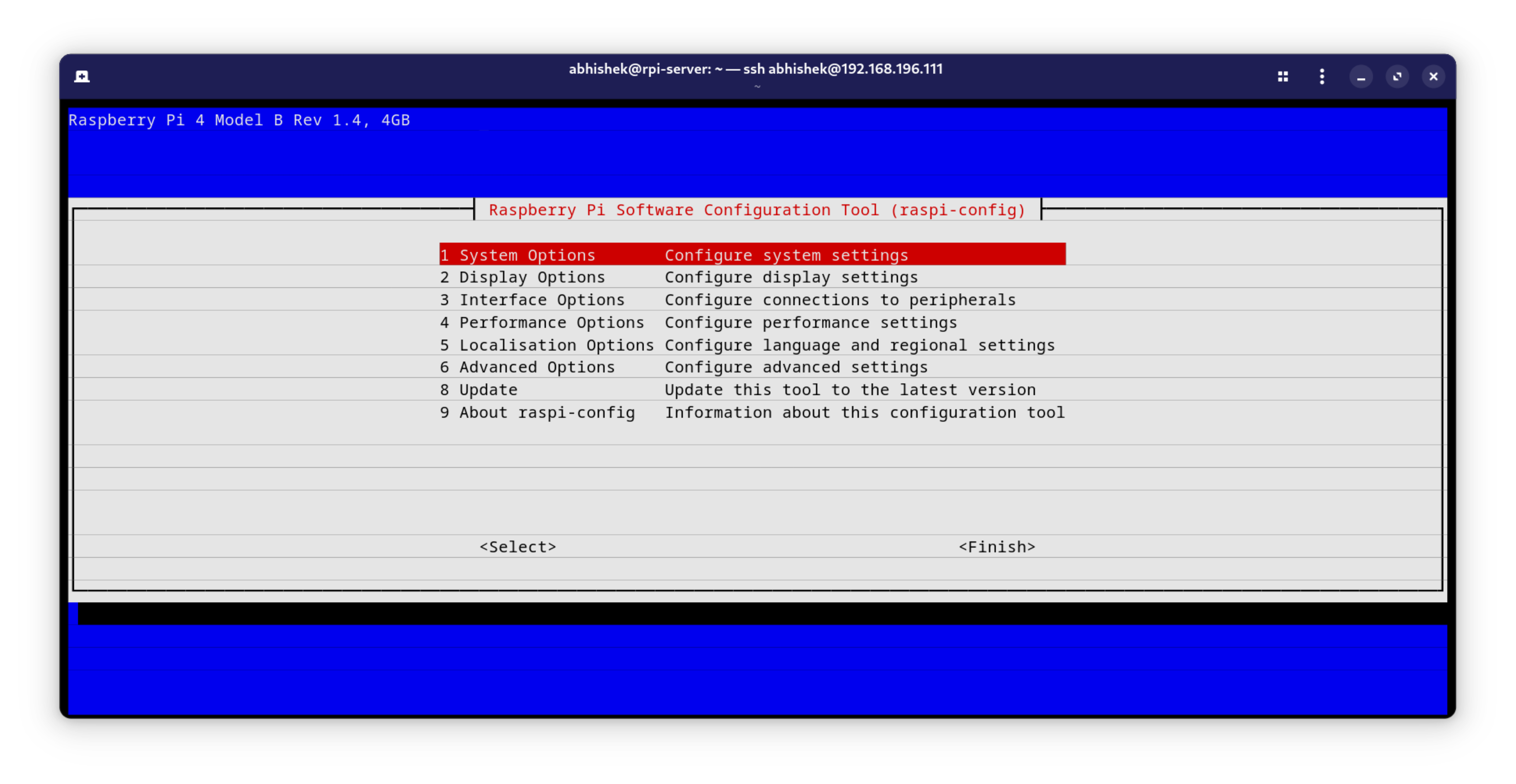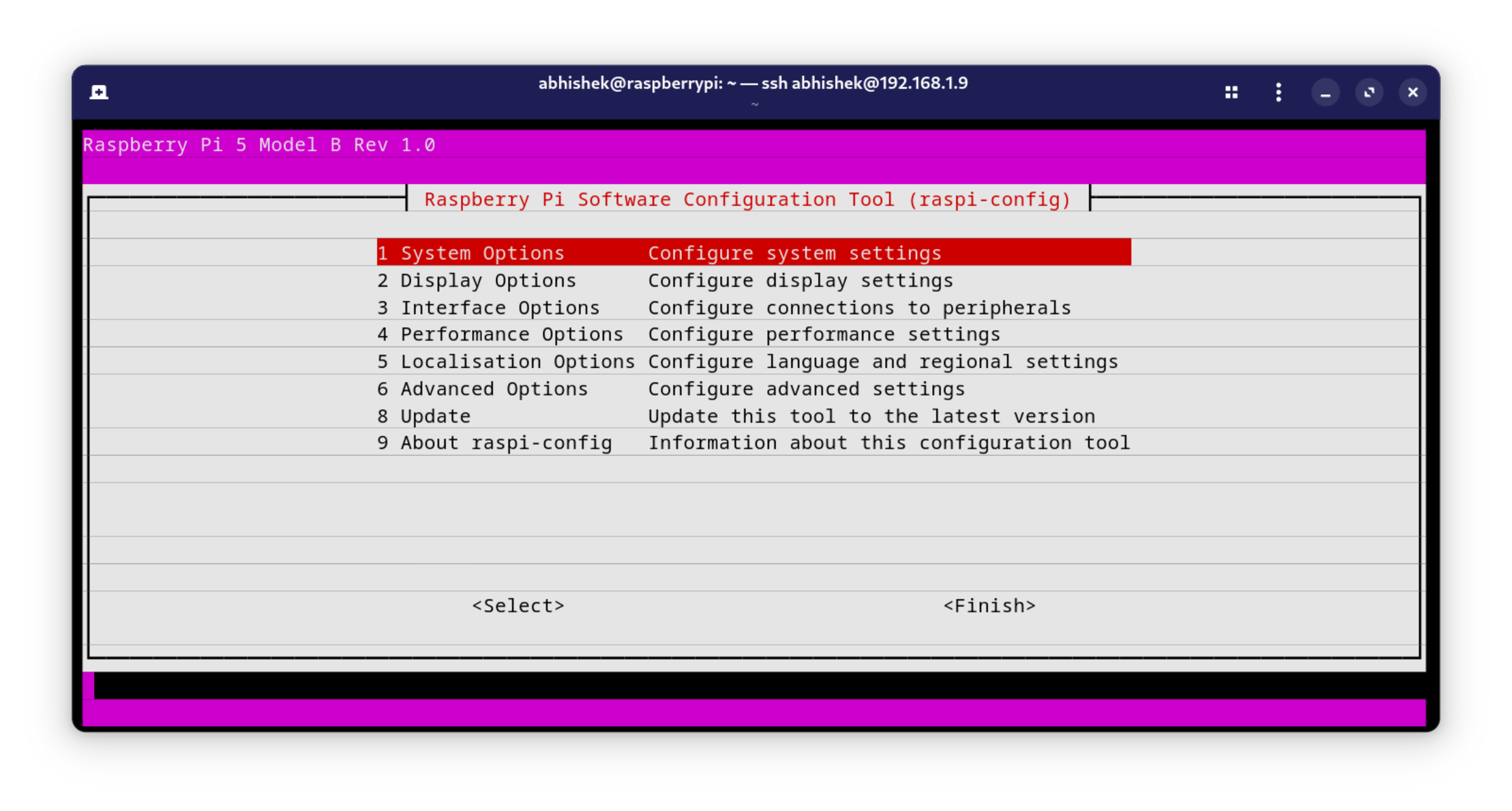Mastering Raspi Remote: The Ultimate Guide To Control Your Raspberry Pi Anywhere
Ever wondered how you can control your Raspberry Pi from anywhere in the world? Well, buckle up because we're diving deep into the world of Raspi Remote! Whether you're a tech enthusiast, a hobbyist, or just someone who loves tinkering with gadgets, this guide has got your back. We'll cover everything from setting up your remote connection to troubleshooting common issues.
Raspi remote might sound intimidating at first, but trust me, once you get the hang of it, it's like riding a bike—except this bike runs on code and coffee. In today's fast-paced world, having remote access to your Raspberry Pi opens up endless possibilities. Imagine being able to monitor your home security system, control smart home devices, or even debug your projects from the comfort of your couch or halfway across the globe.
This article isn't just about throwing information at you; it's about equipping you with the knowledge and tools to master Raspi Remote. So, grab a snack, pour yourself a drink, and let's get started on this awesome journey. No matter your skill level, by the end of this, you'll be a pro at managing your Raspberry Pi remotely.
- Joyce Dewitt The Remarkable Journey Of A Tv Icon
- Aditi Mystery Sex Videos Unveiling The Truth Behind The Controversy
Here's a quick rundown of what we'll cover:
- What is Raspi Remote?
- Why You Need Remote Access
- Setting Up Your Raspberry Pi for Remote Access
- Popular Tools for Raspi Remote
- Tips and Tricks for Smooth Remote Connections
- Security Best Practices
- Troubleshooting Common Issues
- Advanced Features
- Future Trends in Raspi Remote
- Final Thoughts
What is Raspi Remote?
Raspi Remote, in simple terms, is all about accessing and controlling your Raspberry Pi from another device, no matter where you are. It's like giving your Raspberry Pi a remote control that works over the internet. Whether you're using SSH, VNC, or any other remote access protocol, the goal remains the same—getting things done without physically being in front of your Pi.
Let's break it down a bit more. Imagine you're working on a project and suddenly realize you forgot to save a file or need to check something on your Raspberry Pi. Instead of rushing back home, you can just pull out your laptop or smartphone, connect to your Pi, and fix the issue in seconds. Sounds pretty cool, right?
- Iris Weinshall The Extraordinary Tale Of A Man Who Broke All The Norms
- Adity Mistri Hot Live Your Ultimate Guide To The Rising Star
Why Raspi Remote Matters
Now, you might be wondering, "Why do I even need Raspi Remote?" Well, here's the deal. Remote access isn't just about convenience; it's about efficiency and flexibility. Whether you're managing a server, running a media center, or building a home automation system, having remote access means you can troubleshoot, update, and manage your projects without being tied down to one location.
Why You Need Remote Access
Alright, so we've established what Raspi Remote is, but let's dive deeper into why it's so important. First off, remote access saves time. Instead of commuting back and forth to your Pi's location, you can handle tasks instantly from anywhere. Second, it enhances productivity. Need to make quick changes to your code or scripts? No problem, just log in remotely and get it done.
Plus, remote access opens up new possibilities for your projects. Imagine running a weather station or monitoring environmental data in a remote location. With Raspi Remote, you can collect and analyze data without needing to be physically present. It's like giving your Raspberry Pi superpowers!
Real-World Applications
Let's talk about some real-world applications of Raspi Remote. For starters, it's perfect for managing home automation systems. You can control smart lights, thermostats, and security cameras from anywhere. It's also great for developers who use Raspberry Pi as a development server. Being able to access your Pi remotely means you can debug, deploy, and test applications without interruptions.
Setting Up Your Raspberry Pi for Remote Access
Now that we know why Raspi Remote is essential, let's talk about how to set it up. Don't worry; it's not as complicated as it sounds. The first step is to ensure your Raspberry Pi is connected to the internet. This might seem obvious, but it's the foundation of remote access.
Next, you'll need to enable SSH (Secure Shell) on your Pi. SSH is one of the most common methods for remote access because it's secure and reliable. To enable SSH, you can either use the Raspberry Pi Configuration tool or modify the config file manually. Once SSH is up and running, you can connect to your Pi using an SSH client like PuTTY (for Windows) or simply the terminal (for macOS and Linux).
Alternative Methods
While SSH is the go-to method for many users, it's not the only option. VNC (Virtual Network Computing) is another popular choice, especially if you need a graphical interface. With VNC, you can see your Raspberry Pi's desktop just like you would if you were sitting in front of it. There are also web-based solutions like ngrok, which allows you to expose your Pi's web services to the internet with minimal setup.
Popular Tools for Raspi Remote
When it comes to Raspi Remote, there are several tools and software that can make your life easier. Let's take a look at some of the most popular ones:
- SSH: As mentioned earlier, SSH is the gold standard for secure remote access. It's lightweight, fast, and supported by virtually all operating systems.
- VNC: If you need a graphical interface, VNC is the way to go. It allows you to interact with your Pi's desktop just like you would locally.
- ngrok: This tool is great for exposing local web services to the internet. It's perfect for testing and debugging web applications running on your Pi.
- TeamViewer: While not as lightweight as SSH or VNC, TeamViewer offers a user-friendly interface and cross-platform compatibility.
Choosing the Right Tool
So, how do you decide which tool to use? It all depends on your needs and preferences. If you're comfortable with the command line and prioritize security, SSH is the way to go. If you need a graphical interface, VNC is your best bet. For quick and easy access to web services, ngrok is a solid choice. Ultimately, the right tool is the one that fits your workflow and project requirements.
Tips and Tricks for Smooth Remote Connections
Now that you know the basics of setting up Raspi Remote, let's talk about some tips and tricks to ensure smooth and reliable connections. First off, make sure your Pi is connected to a stable internet connection. Nothing ruins a remote session faster than a spotty Wi-Fi signal.
Another tip is to use static IP addresses or dynamic DNS services. This ensures that your Pi's IP address doesn't change, making it easier to connect remotely. Additionally, consider setting up port forwarding on your router to allow external connections to your Pi.
Optimizing Performance
For those looking to optimize performance, there are a few things you can do. Start by disabling unnecessary services on your Pi to free up resources. You can also adjust the resolution and quality settings in VNC to reduce bandwidth usage. Lastly, keep your software and firmware up to date to ensure compatibility and security.
Security Best Practices
Security is a big deal when it comes to Raspi Remote. After all, you're essentially opening a door to your Pi from the outside world. To protect your Pi and your data, follow these best practices:
- Use strong, unique passwords for your Pi's user accounts.
- Enable two-factor authentication (2FA) whenever possible.
- Keep your software and firmware updated to patch vulnerabilities.
- Use a firewall to block unauthorized access.
- Limit SSH access to specific IP addresses if possible.
Common Security Threats
Some common security threats to be aware of include brute-force attacks, malware infections, and unauthorized access. By following the best practices mentioned above, you can significantly reduce the risk of these threats. Remember, security is an ongoing process, so stay vigilant and adapt as needed.
Troubleshooting Common Issues
Even with the best setup, things can go wrong sometimes. Here are some common issues you might encounter with Raspi Remote and how to fix them:
- Connection Refused: Check your Pi's IP address and ensure SSH or VNC is enabled.
- Timeout Errors: Verify your internet connection and ensure port forwarding is set up correctly.
- Authentication Failed: Double-check your username and password, and ensure SSH keys are configured properly.
When All Else Fails
If you're still having trouble, don't panic. Start by checking your logs for error messages. This can give you valuable insights into what's going wrong. You can also try resetting your Pi's network settings or reinstalling the remote access software. Sometimes, a fresh start is all it takes to fix the issue.
Advanced Features
Once you've mastered the basics, it's time to explore some advanced features of Raspi Remote. One exciting option is setting up a headless Raspberry Pi. This means running your Pi without a monitor, keyboard, or mouse, relying solely on remote access. It's perfect for projects where physical access isn't necessary.
Another advanced feature is automating tasks with scripts. You can write scripts to automate routine tasks like backups, updates, and monitoring. This not only saves time but also ensures consistency and reliability.
Exploring the Possibilities
The possibilities with Raspi Remote are virtually endless. You can set up a media server, run a web application, or even create a personal cloud storage solution. The key is to think creatively and leverage the power of your Raspberry Pi to its fullest potential.
Future Trends in Raspi Remote
As technology continues to evolve, so do the possibilities for Raspi Remote. One trend to watch is the integration of AI and machine learning into remote access solutions. Imagine being able to analyze data or run complex algorithms on your Pi from anywhere in the world. It's an exciting prospect that could revolutionize the way we interact with our devices.
Another trend is the increasing focus on security and privacy. With more devices connected to the internet, the need for robust security measures has never been greater. Expect to see advancements in encryption, authentication, and threat detection in the near future.
Final Thoughts
Well, there you have it—a comprehensive guide to mastering Raspi Remote. From setting up your Pi for remote access to exploring advanced features, we've covered it all. Remember, the key to success is practice and experimentation. Don't be afraid to try new things and push the boundaries of what your Raspberry Pi can do.
Before you go, I'd love to hear your thoughts. Have you tried Raspi Remote before? What challenges did you face, and how did you overcome them? Leave a comment below and let's keep the conversation going. And if you found this article helpful, don't forget to share it with your friends and fellow Pi enthusiasts. Until next time, happy tinkering!



Detail Author:
- Name : Prof. Hudson Kerluke
- Username : kian.rice
- Email : vernie62@hotmail.com
- Birthdate : 1999-10-26
- Address : 709 Ocie Bridge Suite 293 Vandervortstad, UT 23598
- Phone : 386-219-7310
- Company : Huel, Ernser and Hettinger
- Job : Landscape Architect
- Bio : Praesentium et repellat et ut. Nobis facere quisquam recusandae dolorem. Fugit consequatur quis quod aut.
Socials
twitter:
- url : https://twitter.com/warda
- username : warda
- bio : Veniam nesciunt nobis explicabo sed velit totam. Officia aspernatur non laborum. Voluptatum sint sequi est. Quaerat ut consectetur voluptate magni.
- followers : 3376
- following : 1399
linkedin:
- url : https://linkedin.com/in/alvaward
- username : alvaward
- bio : Laborum in laboriosam porro minima.
- followers : 2212
- following : 2694